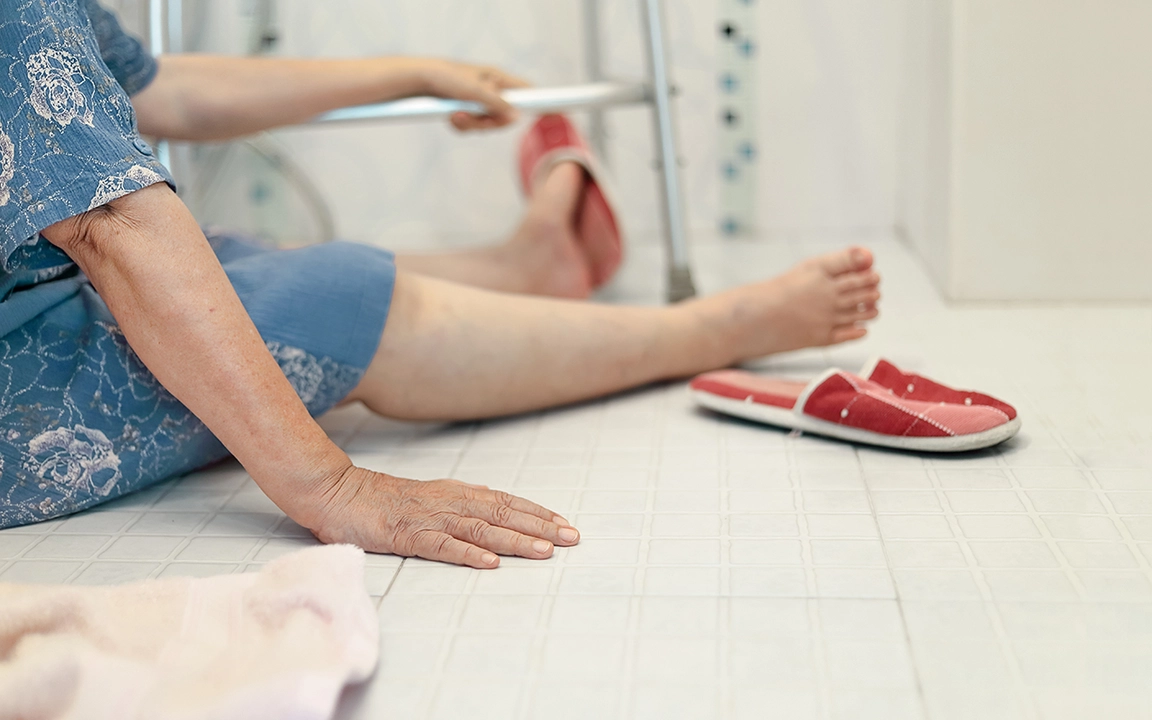Understanding Reperfusion Injury
As we age, our bodies become more susceptible to various health issues, one of which is reperfusion injury. Reperfusion injury occurs when blood flow is restored to an area that has been deprived of oxygen and nutrients due to a blockage. In this article, we will explore the dangers of reperfusion injury in the elderly population, and what can be done to prevent and manage this condition.
The Science Behind Reperfusion Injury
Reperfusion injury is primarily caused by the production of harmful molecules called reactive oxygen species (ROS). ROS are generated when blood flow is suddenly reintroduced to an oxygen-starved area of the body. These molecules can cause further damage to cells and tissues that were already weakened by the lack of oxygen and nutrients. In the elderly population, the body's ability to neutralize ROS is diminished, increasing the risk of severe reperfusion injury.
Recognizing the Symptoms of Reperfusion Injury
Reperfusion injury can manifest in various ways, depending on the affected area of the body. Some common symptoms include pain, swelling, and changes in skin color. In more severe cases, tissue death (necrosis) can occur. It is crucial for elderly individuals and their caregivers to be aware of these symptoms and seek immediate medical attention if they suspect a reperfusion injury.
Common Causes of Reperfusion Injury in the Elderly
In the elderly population, there are several factors that can contribute to the development of reperfusion injury. Some of these factors include:
- Age-related changes in blood vessels, leading to decreased blood flow and increased risk of blockages.
- Chronic medical conditions, such as diabetes, which impair the body's ability to heal and recover from injury.
- Medications, which can affect blood flow and the body's ability to neutralize ROS.
- Surgical procedures, particularly those involving the heart or blood vessels, which can inadvertently cause reperfusion injury.
Preventing Reperfusion Injury in the Elderly
Preventing reperfusion injury in the elderly population is crucial to maintaining overall health and well-being. Some steps that can be taken to reduce the risk of reperfusion injury include:
- Managing chronic medical conditions, such as diabetes, to ensure proper blood flow and tissue health.
- Regular physical activity, which can help improve blood flow and strengthen the cardiovascular system.
- Eating a well-balanced diet, rich in antioxidants, to help neutralize ROS and support overall health.
- Discussing medications and surgical procedures with healthcare providers to identify potential risks and implement strategies to minimize reperfusion injury.
Treatment Options for Reperfusion Injury
If a reperfusion injury does occur, timely and appropriate treatment is essential to minimize damage and promote healing. Some potential treatment options include:
- Medications, such as antioxidants and anti-inflammatory drugs, which can help to neutralize ROS and reduce tissue damage.
- Hyperbaric oxygen therapy, which involves breathing in pure oxygen in a pressurized room, to increase the amount of oxygen reaching damaged tissues and promote healing.
- Surgical procedures, such as bypass surgery or angioplasty, to restore blood flow and prevent further tissue damage.
- Physical therapy and rehabilitation, to help regain strength and function in the affected area.
The Importance of Education and Awareness
Educating the elderly population and their caregivers about the risks and signs of reperfusion injury is essential in preventing and managing this condition. Awareness can lead to early detection, prompt treatment, and better outcomes for elderly individuals affected by reperfusion injury. By understanding the science behind this condition and taking steps to prevent and treat it, we can protect the health and well-being of our aging population.







Illiana Durbin
May 27, 2023 AT 23:33Reperfusion injury is a real concern for older adults, and staying proactive can make a huge difference. Keep a close eye on any sudden swelling or pain after procedures, and don’t hesitate to call a healthcare professional. Maintaining a diet rich in antioxidants-think berries, leafy greens, and nuts-helps bolster the body’s natural defenses. Regular, low‑impact exercise improves circulation, which can lessen the severity of any potential injury. Most importantly, involve caregivers in monitoring and reporting any changes promptly.
Tyler Heafner
May 28, 2023 AT 01:26It is imperative to recognize that the elderly possess diminished oxidative stress mitigation mechanisms. Consequently, clinicians should rigorously evaluate antioxidant supplementation prior to invasive interventions. Adherence to evidence‑based protocols will mitigate iatrogenic complications.
anshu vijaywergiya
May 28, 2023 AT 02:50Ah, the dance of life and death at the cellular frontier! When the rush of oxygen finally kisses the starving tissues, the fireworks of reactive oxygen species explode like a thousand tiny suns. Each ROS, a mischievous sprite, darts through membranes, stealing lipids and snipping DNA strands as if wielding a scalpel of chaos. In the twilight years, our heroic antioxidants – those valiant glutathione warriors – have thinned, leaving the stage to these unruly invaders. The result? A symphony of pain, swelling, and discoloration that whispers the tale of reperfusion gone awry.
But fear not, for knowledge is the lantern that guides us through this storm. First, we must arm the elderly with a diet that sings with polyphenols: berries, dark chocolate, and cruciferous vegetables become their shield. Second, structured aerobic exercise, even a gentle walk, trains the vasculature to sing a smoother tune when blood finally returns. Third, medical practitioners should consider pre‑treatment antioxidant regimens, perhaps a cocktail of vitamin C, vitamin E, and N‑acetylcysteine, calibrated to the individual's renal function.
Beyond the bedside, the community can rally – caregivers learning the subtle hue shifts, families noting any swelling before it blooms. When the symptoms appear, swift action-hyperbaric oxygen therapy or targeted anti‑inflammatory agents-can snuff out the flames before they consume the tissue. In essence, the battle against reperfusion injury is fought on three fronts: prevention, early detection, and aggressive treatment. Let us unite our efforts, for the elderly deserve not only more years, but richer, healthier ones.
ADam Hargrave
May 28, 2023 AT 04:13Oh sure, because the elderly just love being bombarded with extra free radicals like party favors.
Michael Daun
May 28, 2023 AT 05:36big thing i notice is ppl forget to mention that meds can actually up the risk. like some chemo drugs or even certain statins make the ros problem worse. also alot of us think just eating greens is enough but you need a balanced diet with enough protein too. making sure your doc checks your meds before any surgery can save a lot of trouble.
Rohit Poroli
May 28, 2023 AT 07:00Indeed, the pathophysiology involves a burst of oxidative stress coupled with endothelial dysfunction, which can be mitigated by bolstering the endogenous antioxidant capacity. Integrating nutraceuticals rich in flavonoids-such as quercetin and catechins-has shown promise in attenuating ROS-mediated cascades. Moreover, employing preconditioning protocols, like intermittent hypoxia, can upregulate protective gene expression (e.g., Nrf2 pathways). A multidisciplinary approach, aligning cardiology, geriatrics, and nutrition, maximizes outcomes for our senior patients.
William Goodwin
May 28, 2023 AT 08:23Reperfusion injury reminds us that life is a balance between renewal and damage – a true philosopher's paradox. 🌱💔 Yet, with the right lifestyle tweaks, we can tip the scales toward healing. Embrace daily movement, savor colorful meals, and stay vigilant about your health checks. 🌟 Remember, every small step adds up to a stronger, more resilient you.
Isha Bansal
May 28, 2023 AT 09:46The discourse surrounding reperfusion injury frequently suffers from a lamentable lack of grammatical precision, which, in my view, detracts from its scientific gravitas. It is incumbent upon contributors to eschew colloquialism and embrace the rigor of formal syntax, lest the argument devolve into incoherence. Moreover, the usage of ambiguous terms such as "some meds" without enumeration exemplifies a regrettable imprecision that sows confusion. One must delineate the pharmacological classes implicated – for instance, the oxidative stress–inducing potential of certain antineoplastic agents or the endothelial‑disruptive properties of non‑selective β‑blockers. Furthermore, the tendency to truncate complex physiological mechanisms into oversimplified statements betrays a superficial comprehension of the subject matter. To elevate the conversation, I propose a systematic exposition: first, define reactive oxygen species, then explicate the cascade of lipid peroxidation, protein oxidation, and DNA damage. Subsequently, integrate the age‑related decline in endogenous antioxidant enzymes, such as superoxide dismutase and catalase, within the narrative. Lastly, articulate evidence‑based interventions, citing peer‑reviewed studies, thereby providing an academically robust foundation. In sum, let us aspire to a discourse that mirrors the exactitude required in both language and science.
Ken Elelegwu
May 28, 2023 AT 11:10From a meta‑analytical perspective, the interplay between ischemic duration and reperfusion timing constitutes a delicate equilibrium that warrants meticulous calibration. While some argue that accelerated reperfusion is universally beneficial, the data reveal a nuanced spectrum where premature restoration exacerbates oxidative burden. Therefore, a stratified protocol, perhaps guided by biomarkers such as troponin kinetics and oxidative indices, could reconcile the dichotomy between timeliness and safety. Embracing this calibrated approach may ultimately refine our therapeutic paradigms for the geriatric cohort.